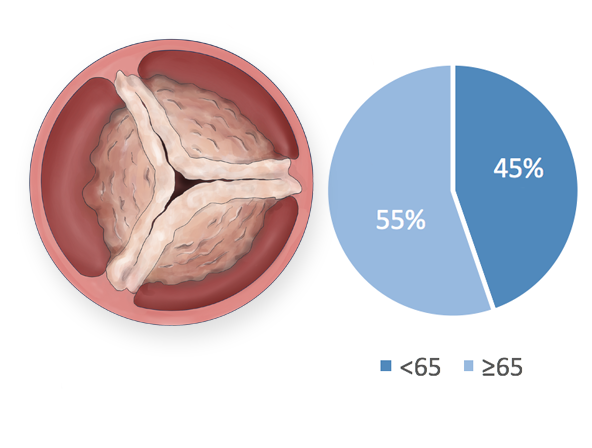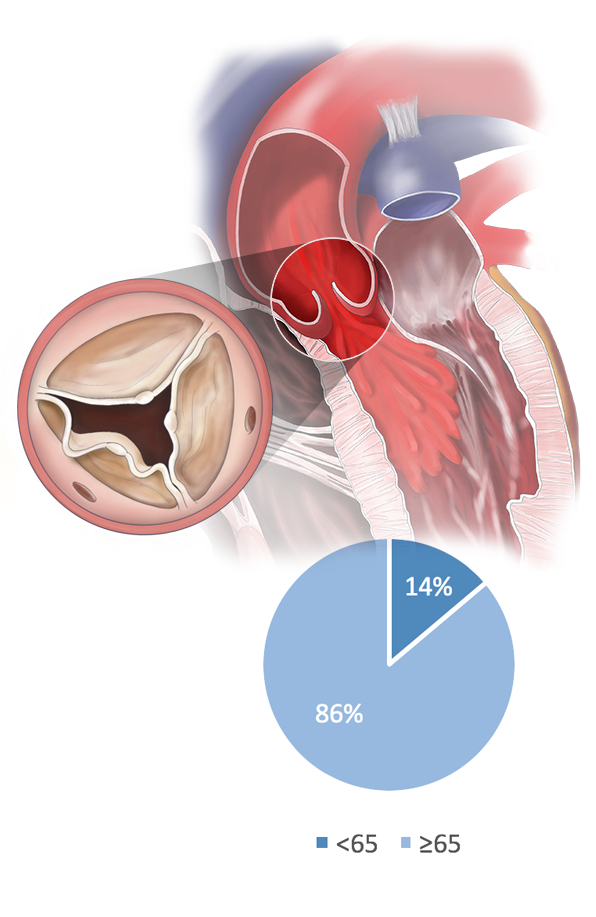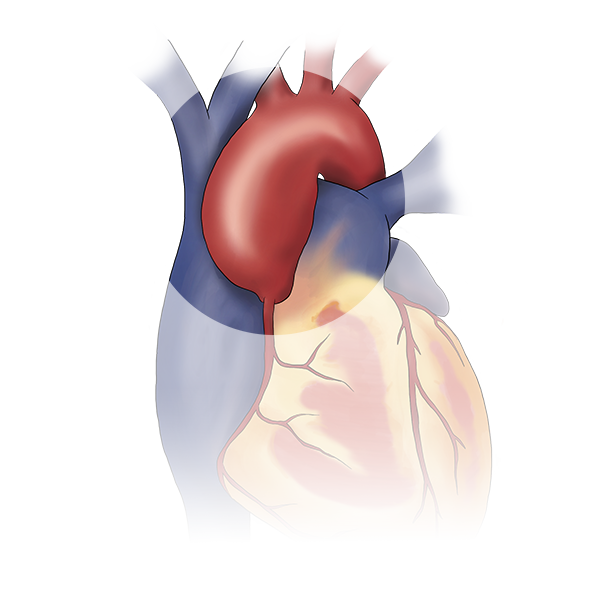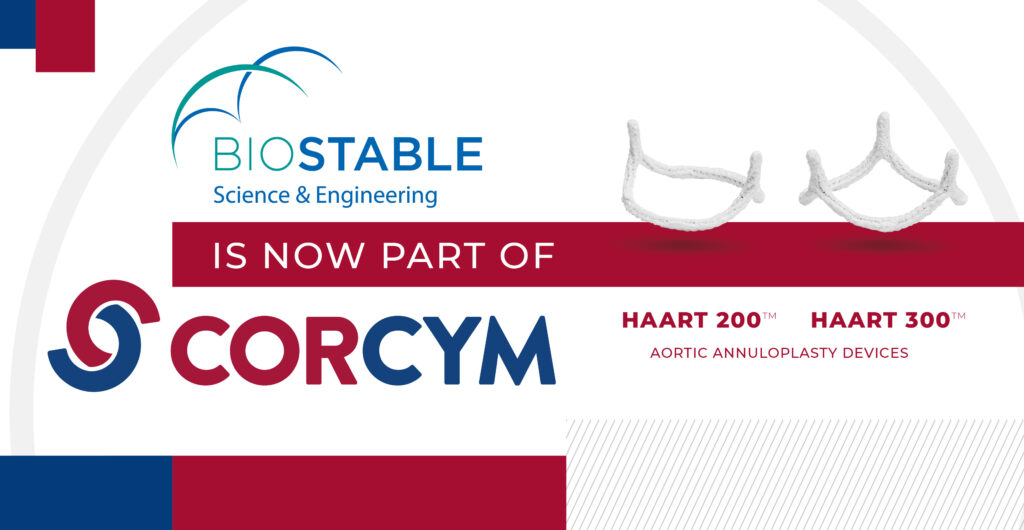Aortic Valve Disease
The aortic valve controls the flow of blood between the left ventricle of the heart and the aorta, the main vessel that supplies blood to the rest of the body. Aortic valve disease is a common term used to describe multiple conditions which cause the aortic valve to function improperly, including congenital valve defects, rheumatic disease, idiopathic root enlargement, endocarditis, valve calcification and degeneration. These conditions generally lead to one of two functional problems: aortic stenosis or aortic insufficiency.
Aortic Stenosis
Aortic stenosis is the restriction of blood flow out of the left ventricle due to calcification and narrowing of the aortic valve. Aortic stenosis affects approximately 0.4% of adults, or 2.25 million people in the U.S. and Europe. Since calcification of the valve occurs over time, the majority of patients with aortic stenosis are over the age of 65.[1]

Aortic Insufficiency
Aortic insufficiency is the reverse flow of blood through the aortic valve back into the left ventricle resulting from inadequate closure of the aortic valve. Nearly all patients with aortic insufficiency have a dilated aortic valve root and many have damaged valve leaflets. Together, these geometric changes to the aortic valve anatomy contribute to valve dysfunction. Aortic insufficiency is slightly more common than stenosis affecting 0.5% of adults, or nearly 2.5 million people in the U.S. and Europe (Med).[1]
Mild cases of aortic valve disease can remain undetected for many years. When diagnosed, milder cases of aortic valve disease can be managed with medications and vigilant monitoring.[2] For patients with more severe, rapidly progressing disease, surgery to replace the aortic valve with a mechanical or tissue valve replacement device is the last treatment option. More than 200,000 patients in the U.S. and Europe undergo aortic valve replacement for aortic valve disease each year.[3]

Thoracic Aortic Aneurysm
Thoracic aortic aneurysm is an abnormal progressive ballooning of the aorta due to the weakening in the aortic wall. Without surgical repair these aneurysm can lead to dissection or rupture of the aorta. When the aneurysm involves the lower portion of the aorta near the aortic valve, it can distort the anatomy of the valve and cause aortic insufficiency.
Surgery to repair the aneurysm requires the affected section of the aorta to be removed and replaced with a synthetic or tissue substitute. More than 20,000 patients in the U.S. and Europe undergo aortic root replacement procedures each year.[3] In the majority of these cases, the aortic valve is substantially intact and functional. However, in approximately 70% of these cases the aortic valve is replaced because of the difficulty of the surgical procedures used to repair and stabilize the native aortic valve.[4]

Continue reading more about Heart Valve Repair vs Heart Valve Replacement.
- Nkomo VT, et al. Burden of valvular heart diseases: a population-based study. Lancet 2006;368:1005-11.
- Nishimura RA, et al. 2014 AHA/ACC guideline for the management of patients with valvular heart disease: A report of the American College of Cardiology/American Heart Association Task Force on Practice Guidelines. J Thoracic Cardiovasc Surg 2014;148:e1-132.
- National Hospital Discharge Survey, Center for Disease Control and Prevention; German Society for Thoracic and Cardiovascular Surgery Registry; National Episode Statistics, Health and Social Care Information Center; BioStable estimates.
- Funkat A, et al. Cardiac Surgery in Germany during 2013: A Report on Behalf of the German Society for Thoracic and Cardiovascular Surgery. Thorac Cardiovasc Surg 2014;62:380–392.

